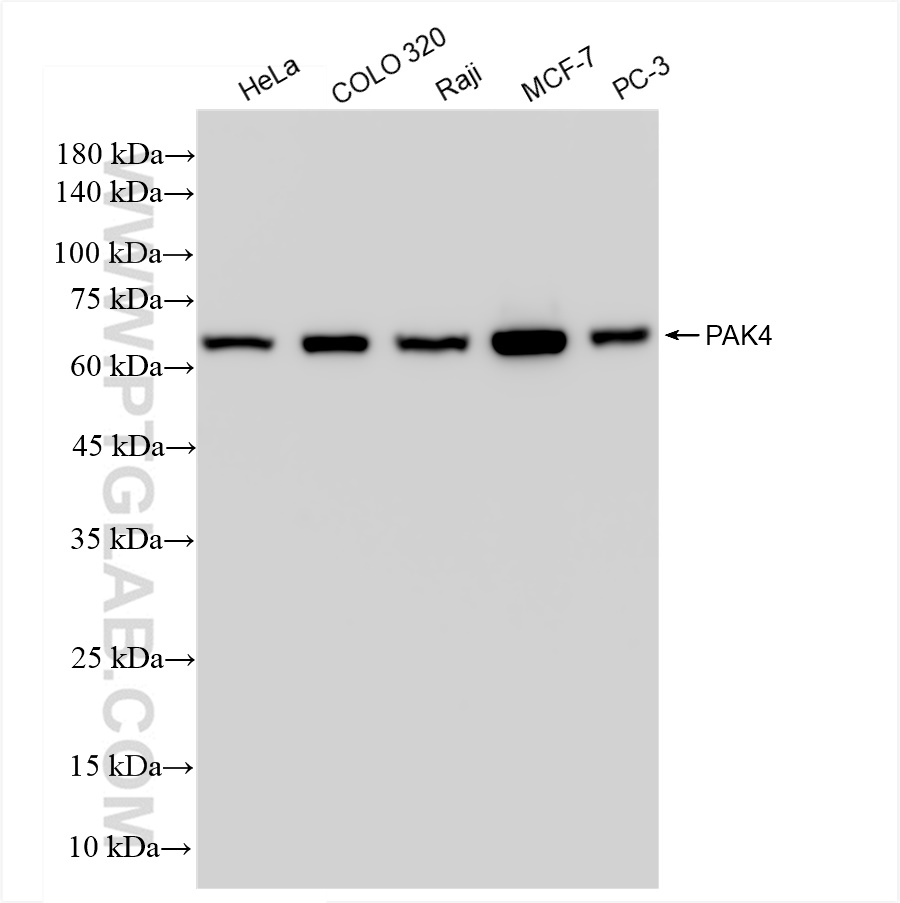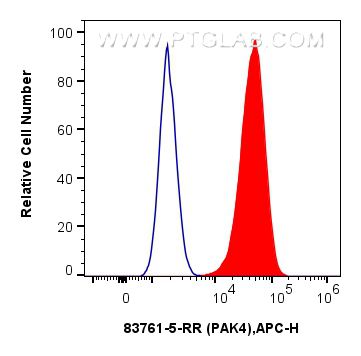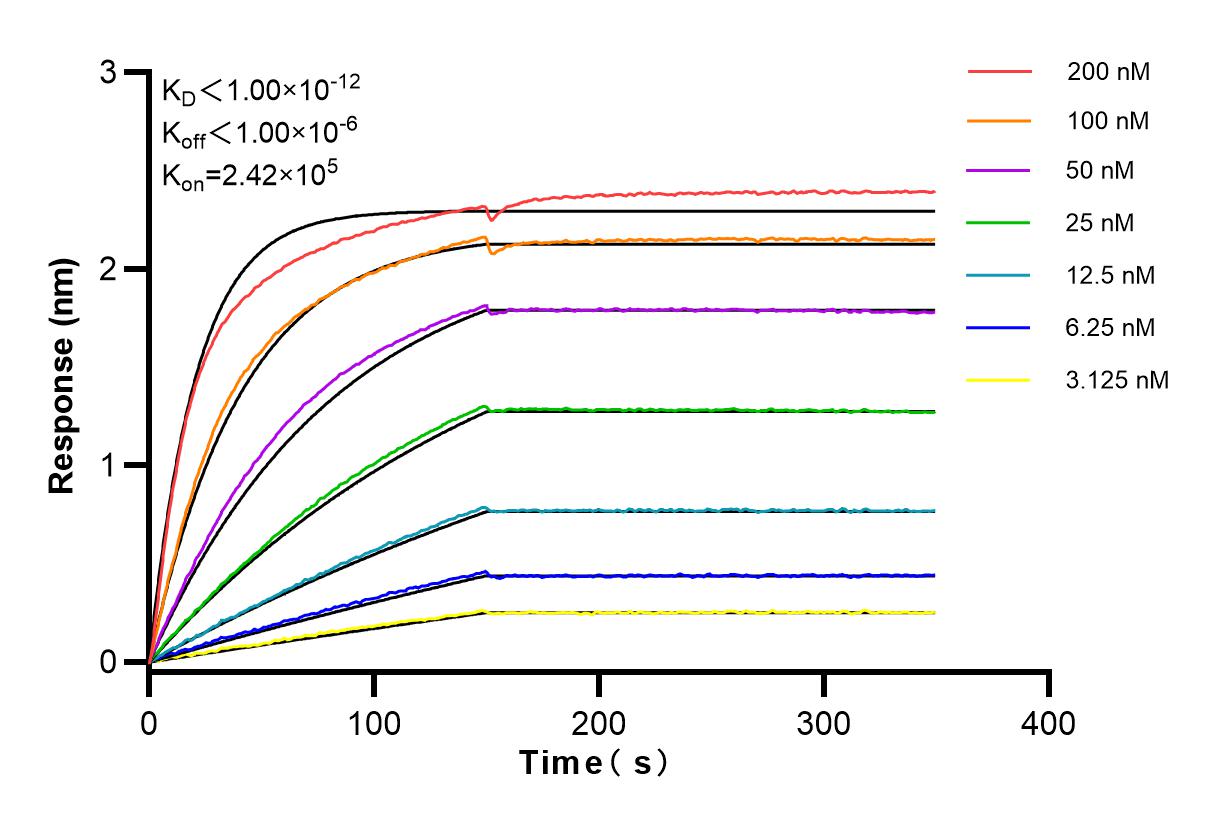验证数据展示
经过测试的应用
| Positive WB detected in | HeLa cells, COLO 320 cells, Raji cells, MCF-7 cells, PC-3 cells |
| Positive FC (Intra) detected in | MCF-7 cells |
推荐稀释比
| 应用 | 推荐稀释比 |
|---|---|
| Western Blot (WB) | WB : 1:5000-1:50000 |
| Flow Cytometry (FC) (INTRA) | FC (INTRA) : 0.25 ug per 10^6 cells in a 100 µl suspension |
| It is recommended that this reagent should be titrated in each testing system to obtain optimal results. | |
| Sample-dependent, Check data in validation data gallery. | |
产品信息
83761-5-RR targets PAK4 in WB, FC (Intra), ELISA applications and shows reactivity with human samples.
| 经测试应用 | WB, FC (Intra), ELISA Application Description |
| 经测试反应性 | human |
| 免疫原 | PAK4 fusion protein Ag5981 种属同源性预测 |
| 宿主/亚型 | Rabbit / IgG |
| 抗体类别 | Recombinant |
| 产品类型 | Antibody |
| 全称 | p21 protein (Cdc42/Rac)-activated kinase 4 |
| 别名 | PAK 4, p21-activated kinase 4, p21 activated kinase 4, KIAA1142, EC:2.7.11.1 |
| 计算分子量 | 64 kDa |
| 观测分子量 | 64 kDa |
| GenBank蛋白编号 | BC025282 |
| 基因名称 | PAK4 |
| Gene ID (NCBI) | 10298 |
| RRID | AB_3671357 |
| 偶联类型 | Unconjugated |
| 形式 | Liquid |
| 纯化方式 | Protein A purfication |
| UNIPROT ID | O96013 |
| 储存缓冲液 | PBS with 0.02% sodium azide and 50% glycerol , pH 7.3 |
| 储存条件 | Store at -20°C. Stable for one year after shipment. Aliquoting is unnecessary for -20oC storage. |
背景介绍
PAK4(p21-activated kinase 4) is also named as KIAA1142. It belongs to the protein kinase superfamily.PAK4 regulates cell morphology, cytoskeletal organization, and cell proliferation and migration. It can also function as an antiapoptotic protein (PMID:14517283). It has 4 isoforms produced by alternative splicing. And it can be autophosphorylated on serine residues when activated by CDC42/p21 (PMID:11278822).
实验方案
| Product Specific Protocols | |
|---|---|
| WB protocol for PAK4 antibody 83761-5-RR | Download protocol |
| Standard Protocols | |
|---|---|
| Click here to view our Standard Protocols |


